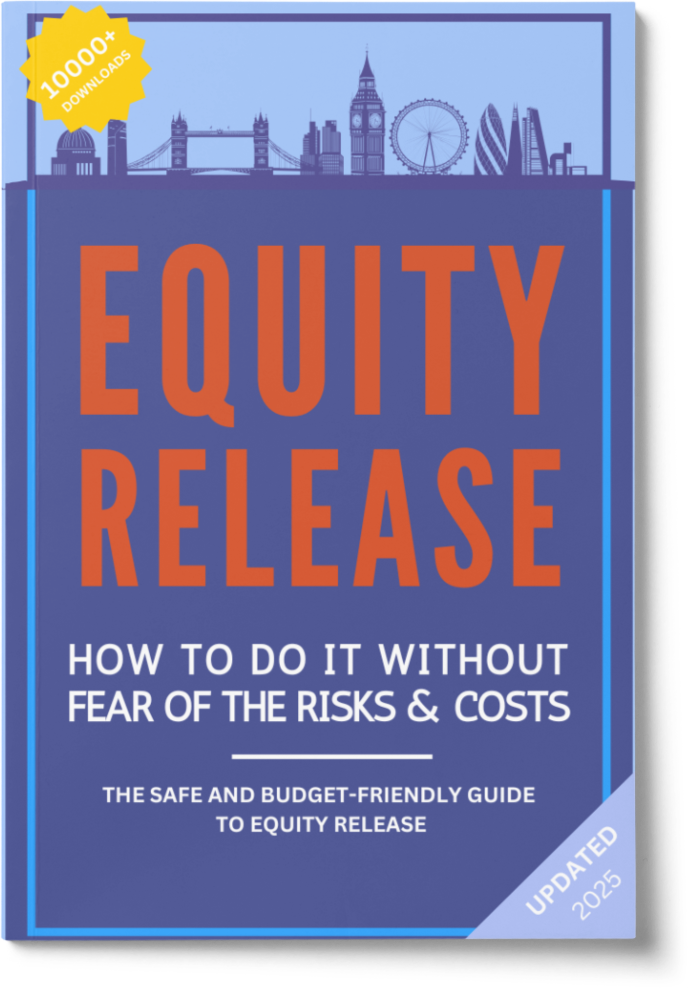Equity Release History: How Has Equity Release Changed Up to 2025

SovereignBoss adheres to a stringent code of editorial guidelines, but some articles may feature partner references. Here is an explanation for how we make money.
- Equity release in the UK originated in the 1960s, evolving from simple agreements into complex and regulated financial products today.
- Over the years, equity release has transformed significantly, introducing more flexible options and stricter regulations for greater consumer protection.
- Key milestones in equity release development include the introduction of Home Income Plans in the 1980s and the formation of the Equity Release Council in 1991.
- Equity release was first introduced in the UK during the 1960s as a means to help retired homeowners access the value of their homes.
- The evolution of equity release in the UK has progressed from early lump-sum lifetime mortgages to more diverse and safer options like drawdown plans and home reversion schemes.
What Is Equity Release?
Equity release is a financial product designed for homeowners, typically those aged 55 or older, that enables them to access the equity tied up in their property without the need to sell it.
The equity in a property is the difference between its current market value and any outstanding mortgage or loans secured against it.
The Early Days of Equity Release: Pre-1980s
The origins of equity release can be traced back to the mid-20th century, although it wasn't widely known or accessible.
During this time, the concept was largely informal, often taking the shape of lifetime mortgages or reverse mortgages.
The idea was simple: homeowners, typically older individuals, could access cash tied up in their properties without having to sell their homes.
However, the lack of regulations and consumer protection meant that the market was chaotic, and many of the early products were complex, with terms that were not always favourable to borrowers.
Additionally, early forms of equity release often had a negative reputation due to high interest rates and expensive terms.
2. The Birth of Modern Equity Release: 1980s-1990s
The 1980s saw the introduction of more structured equity release products, driven by growing demand among retirees who needed additional income.
This was particularly true in the UK, where an aging population and the decline of pension schemes meant that many retirees had limited financial security.
In 1991, the Equity Release Council was founded, marking a pivotal moment in the development of the sector. It provided much-needed oversight and helped to standardize products, making equity release more transparent and trustworthy.
This period also saw the introduction of "lifetime mortgages" and "home reversion plans," which would become the cornerstones of the market.
- Lifetime Mortgages: These allow homeowners to borrow against their property, with the loan repaid when the borrower dies or moves into care.
- Home Reversion Plans: Homeowners sell part or all of their home to a provider in exchange for a lump sum or regular income, while retaining the right to live in the property for the rest of their lives.
3. Regulation and Consumer Protection: 2000s
By the early 2000s, as the equity release market grew, concerns about consumer protection continued to rise. The UK government introduced new regulations to ensure that borrowers were fully informed of the risks involved. For example, the Financial Services Authority (FSA) implemented rules around the transparency of equity release products and required advisers to assess whether the products were suitable for clients.
In 2004, the Equity Release Council introduced a code of practice that ensured providers offered a "no negative equity guarantee." This meant that homeowners would never owe more than the value of their property, protecting their estate from being burdened with debt.
The Financial Crisis and Its Impact: 2007-2010
The global financial crisis of 2007-2008 had a significant impact on the equity release market. During the recession, property values dropped, and many financial institutions became more cautious about lending, especially for high-risk products like equity release.
Despite this, equity release continued to be a crucial source of income for older homeowners, especially for those who had seen their pensions or savings diminish during the economic downturn. In the aftermath of the crisis, the sector began to stabilize, with more emphasis placed on creating sustainable and consumer-friendly products.
Modern Developments and Innovation: 2010s-Present
The 2010s saw a shift in the way equity release products were marketed and structured. With a recovery in the housing market and increasing life expectancy, more people began to see the value of using their property to fund retirement or long-term care.
Today, the market offers a wide variety of products tailored to different needs. These include:
- Drawdown Lifetime Mortgages: Homeowners can access a lump sum or take smaller amounts of money over time, which provides more flexibility.
- Interest-Only Lifetime Mortgages: Borrowers only pay the interest on the loan while they live in the home, with the principal paid when they pass away or move into care.
- Flexible Repayment Options: Modern products now often allow for partial repayments of the loan, which helps to reduce the overall debt.
Furthermore, the market has seen an increase in products specifically designed for people looking to fund long-term care costs, with some plans offering a more straightforward way of releasing equity for this purpose.
The Future of Equity Release
The equity release market is expected to continue growing as more people seek ways to access the wealth tied up in their homes. With an aging population, many people will require financial assistance in later life, and equity release will play an important role in bridging the gap.
Moreover, as technology and digital tools evolve, the process of applying for equity release is becoming more streamlined, offering easier access and more competitive rates. Providers are also working on more personalized solutions that cater to the diverse needs of borrowers, including those in need of care or those wishing to leave an inheritance for their loved ones.
Conclusion
Equity release has come a long way since its early, unregulated days. It has transformed into a more transparent, regulated, and widely accepted way for homeowners to access the value in their property.
Over the years, the market has adapted to changing economic conditions and consumer needs, providing retirees and homeowners with more flexible and reliable options.
As the demand for financial products that support aging populations grows, equity release is likely to remain a key part of the solution for those looking to enhance their retirement income or cover the costs of long-term care.
WAIT! Before You Start…
Equity Release Calculator
How Much Equity Can You Release?
Spotted a Mistake? Let us know here.




